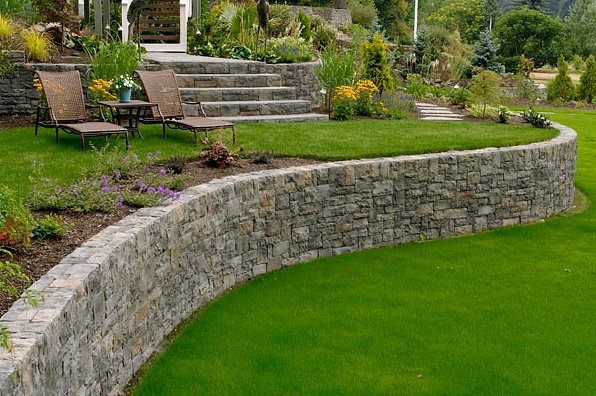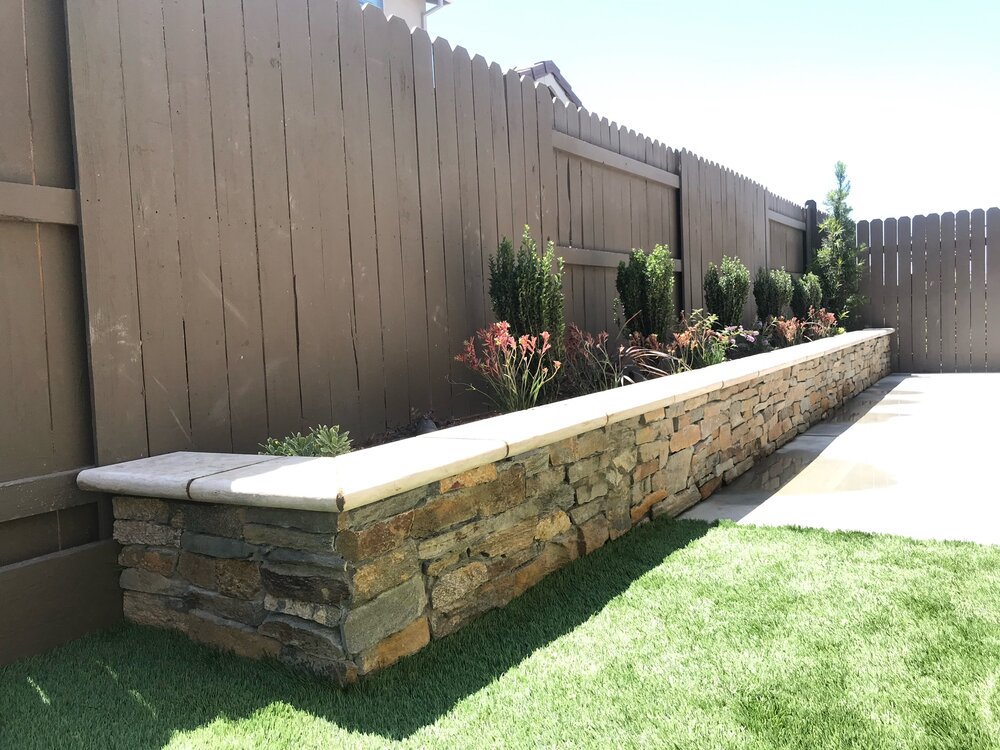Retaining Wall And Garden Wall Construction Fundamentals Explained
Wiki Article
The Best Strategy To Use For Retaining Wall And Garden Wall Construction
Table of ContentsThe smart Trick of Retaining Wall And Garden Wall Construction That Nobody is DiscussingRetaining Wall And Garden Wall Construction Fundamentals ExplainedIndicators on Retaining Wall And Garden Wall Construction You Need To KnowNot known Facts About Retaining Wall And Garden Wall Construction
If this slope is not controlled, the wall surface will certainly move or fall short. Rainwater that escapes the top of a preserving wall can harm the dirt and also plants on either side, eroding them away. Water drainage systems divert this water from susceptible locations, decreasing the influence to the structure as well as its surroundings.It's been stated half of all the troubles with keeping wall surfaces involve water drainage as well as water concerns, and maintaining water out of these wall surfaces is a huge one. If it's completely dry, there's little to no possibility any kind of greenery can hold - Retaining Wall And Garden Wall Construction. An effectively developed and mounted system will certainly keep your wall completely dry, conserving you money on upkeep and replacement expenses.
Load it with crushed stone or crushed rock. All retaining walls need to include water drainage stone even if a draining pipes pipeline is not called for. Location filter material over the drainage stone and below the topsoil. That stops great product and natural matter from blocking up the drain rock. If your preserving wall surface requires a drainage pipe, ensure the pipe has slots on all sides, not just one.

Retaining Wall And Garden Wall Construction Things To Know Before You Buy
This damage can be pricey to fix, and an effectively installed drain would certainly have avoided it (Retaining Wall And Garden Wall Construction).
A keeping wall that maintains soil on the behind as well as water on the frontside is called a seawall or a bulkhead. A keeping wall surface is developed to keep in location a mass of planet or such, such as the edge of a balcony or excavation. The structure is built to withstand the side pressure of dirt when there is a desired adjustment in ground altitude that exceeds the angle visit the website of repose of the dirt.

These are cantilevered from a ground and rise above the grade on one side to retain a greater degree grade on the opposite side. The wall surfaces must resist the side stress produced by loose soils or, sometimes, water pressures. Every keeping wall supports a "wedge" of dirt. The wedge is specified as the dirt which extends beyond the failing plane of the soil type existing at the wall site, and can be calculated as soon as the dirt friction angle is understood.
The Best Strategy To Use For Retaining Wall And Garden Wall Construction
This decrease reduces the stress on the maintaining wall. One of the most essential factor to consider in proper style and installment of keeping wall surfaces is to recognize as well as combat the propensity of the kept product to relocate downslope due to gravity. This develops lateral planet stress behind the wall which depends upon the angle of inner friction (phi) as well as the natural strength (c) of the kept product, as well as the direction and also size of movement the preserving framework goes through.
Various kinds of retaining wall surfaces Construction kinds of gravity retaining walls Gravity walls depend on their mass (stone, concrete or various other hefty product) to stand up to stress from behind as well as may have a 'batter' problem to read more enhance stability by leaning back toward the retained dirt. For short landscape design wall surfaces, they are frequently made from mortarless rock or segmental concrete devices (stonework systems).
This sort of wall surface utilizes much less material than a traditional gravity wall surface. Diaphragm walls are a kind of maintaining walls that are very tight and usually water tight. Diaphragm wall surfaces are expensive wall surfaces, however they conserve time as well as room, as well as hence are made use of view in urban constructions. Sheet stack retaining wall surfaces are typically made use of in soft soil and also tight rooms.
For a quick quote the product is usually driven 1/3 over ground, 2/3 underground, but this may be changed relying on the environment. Taller sheet heap walls will need a tie-back support, or "dead-man" placed in the dirt a range behind the face of the wall surface, that is tied to the wall, normally by a cable or a rod.
Get This Report on Retaining Wall And Garden Wall Construction
A secured preserving wall surface can be created in any one of the abovementioned styles but also consists of added toughness using cords or various other remains anchored in the rock or soil behind it. Usually driven into the material with boring, supports are after that broadened at the end of the cable television, either by mechanical means or usually by infusing pressurized concrete, which broadens to form a bulb in the dirt.Report this wiki page